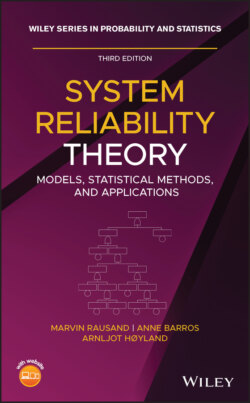Читать книгу System Reliability Theory - Marvin Rausand - Страница 145
3.6.1 Classification According to Local Consequence
ОглавлениеBlache and Shrivastava (1994) classify failures according to the completeness of the failure.
1 Intermittent failure. Failure that results in the loss of a required function only for a very short period of time. The item reverts to its fully operational standard immediately after the failure.
2 Extended failure. Failure that results in the loss of a required function that will continue until some part of the item is replaced or repaired. An extended failure may be further classified as:Complete failure. Failure that causes complete loss of a required function.Partial failure. Failure that leads to a deviation from accepted item performance but do not cause a complete loss of the required function.Both the complete failures and the partial failures may be further classified as:Sudden failure. Failure that could not be forecast by prior testing or examination.Gradual failure. Failure that could be forecast by testing or examination. A gradual failure represents a gradual “drifting out” of the specified range of performance values. The recognition of a gradual failure requires comparison of actual item performance with a performance requirement, and may in some cases be a difficult task.Extended failures may be split into four categories; two of these are given specific names:Catastrophic failures. A failure that is both sudden and complete.Degraded failure. A failure that is both partial and gradual (such as the wear of the tires on a car).
The failure classification described above is shown in Figure 3.7, which is adapted from Blache and Shrivastava (1994).
Figure 3.7 Failure classification.
Source: Adapted from Blache and Shrivastava (1994)
.
